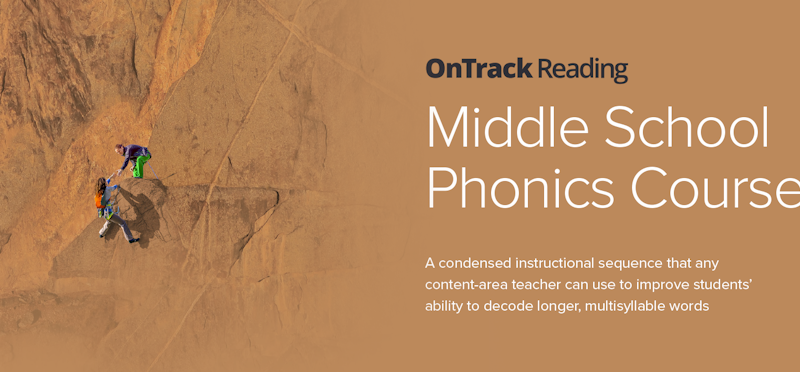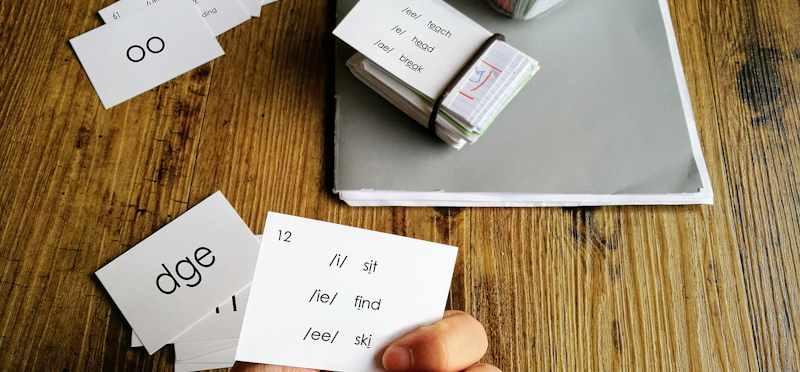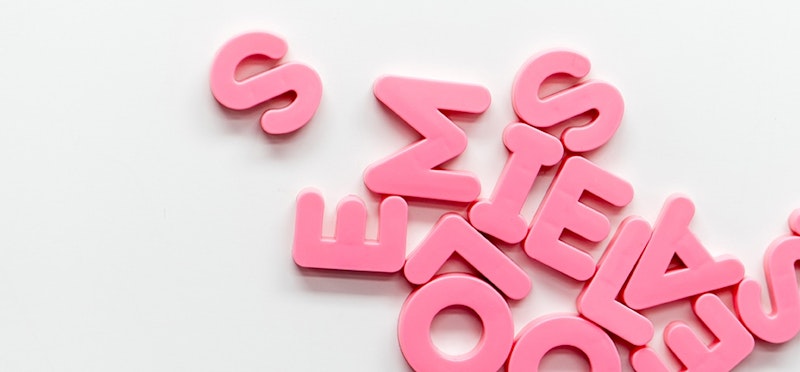The only special coding used in the OnTrack Reading Phonics Program is a single-underline to denote digraphs in words. The discussion on this page describes how a teacher or parent, can use single-underlines, double-underlines, and the numbers 2, 3, and 4 to denote the phonics structure in almost any word when discussing them in class.
To help you determine whether to number a letter or digraph, or leave it unnumbered if it represents its most common sound, you can download the list below, one for vowel spellings and the other for consonant spellings.
In addition, the coding of the 43 phonemes is easy to learn. No special characters need be memorized since it uses the regular alphabet. See the article Notation for the 43 Sounds to learn how each sound is coded.
Middle School Phonics Course - Digital Download
Coding in Class Is a Two-Part Process
Coding in the classroom involves two steps, breaking a longer word up into chunks, and then marking up the code in each chunk. The chunks are not syllables but, as with syllables, they each have one vowel sound. With one-syllable words, only the second step is required since there will only be one chunk to mark up.
Let's look at only one-syllable words first, so we can get right to the marking up process.
Only three types of marks are used, single underline, numbers (2, 3, and 4), and double underline.
What Each Mark Represents
Single Underline: Used to mark digraphs, where two, three, or even four letters represent a single sound. Here are examples:
- s h i p
- c h e s s
- s h a r k
- s t a c k
- r i g h t
- t h o u g h t
Numbers 2, 3, 4: Used to mark the Second, Third, and Fourth Vowel Sounds of all vowel spellings that are not pronounced with their most common sound. (See the two PDFs you can download above to determine the number.) Here are examples with explanations:
- c a t - No numbering is required since "c," "a," and "t" all represent their most common sound.
- c i t y - Mark a 2 over the "c" (2nd sound of "c" is /s/)
- l a d y - Mark a 2 over the "a" (2nd sound of "a" is /ae/)
- c o w - No numbering required
- g r o w - Mark a 2 over the digraph ow (2nd sound of "ow" is /oe/)
- h o u n d - No numbering required
- s o u l - Mark a 2 over the digraph ou (2nd sound of "ou" is /oe/)
- t o u c h - Mark a 3 over the digraph ou (3rd sound of "ou" is /u/) (ch is a digraph)
- g r o u p - Mark a 4 over the digraph ou (4th sound of "ou" is /oo/)
- c h e a p - No numbering required (ch is a digraph)(ea is a digraph and /ee/ is its most common sound)
- s c h o o l - Mark a 2 over the digraph "ch" (2nd sound of "ch" is /k/) (oo is a digraph and /oo/ is its most common sound)
- c h e f - Mark a 3 over the digraph "ch" (3rd sound of "ch" is /sh/)
Double Underline: Used to mark both extraneous (unneeded) letters in a word and letters or digraphs that don't represent their usual sounds. In the first case, the extraneous letters are just double underlined. In that case, the letters aren't sounded out, that is, they aren't pronounced. Here are a few examples but using only single underlines due to the limitations of doing this on an internet page:
- t w o - The "w" is not pronounced; it's an extraneous letter in "two"
- s w o r d - The "w" would be double underlined. (or is a digraph)
- a r e - The "e" is extraneous, making "are" look like "air". (ar is a digraph)
- w e r e - The "e" is extraneous, making "were" look like "weer" (er is a digraph)
- s h o e - The "e" is extraneous, making "shoe" look like "show" (sh is a digraph)
The double underline is also used to mark an unusual sound assigned to a spelling in a word. That could be sufficient, but to make matters clearer, the actual sound can be written below the double underline. Again, some examples:
- s a i d - Write e under the lines to denote the /e/ sound
- s a y s - Write e under the lines. Also, the second "s" would have a "2" above it
- s e w - Write oe under the lines to denote the /oe/ sound.
- . .o n e - My favorite here. Write w under the line before the word. ("ne" is a digraph)
- . .o n c e - Another favorite. Same as "one" ("ce" is a digraph)
This concludes the description of the marking process. See the article Chunking Multisyllable Words for a description of how longer words are divided into chunks. Each chunk is then marked up using the marking system described above.
Also, so you can see the full marking process illustrated, you can download a Recoded Ayres List with the link below.
The list is not the complete Ayres List, but it does illustrate the easy coding system that you can use in class and it gives you some idea of how rarely the double underline needs to be used. If a word doesn't have a double underline, it can be fully explained with the phonics code. In other words, it doesn't need to be considered a "sight word" that requires rote memorization without a phonics explanation.
"One" and "Once"
A comment about those weird words "one" and "two" is in order here. Note that they were both used as examples requiring the double underline. Very few words require it, but those two definitely qualify. In fact, the double underline is what marks a word as a true sight word since it will contain code that can't be taught as part of an organized system. It has to be memorized, or at least the part with the double underline beneath it does.
An important feature of the OnTrack Reading coding system is that you will find very few true sight words. And, with the ones that are, it will be obvious to the child which piece of code in the word has to be memorized because it's double underlined.





